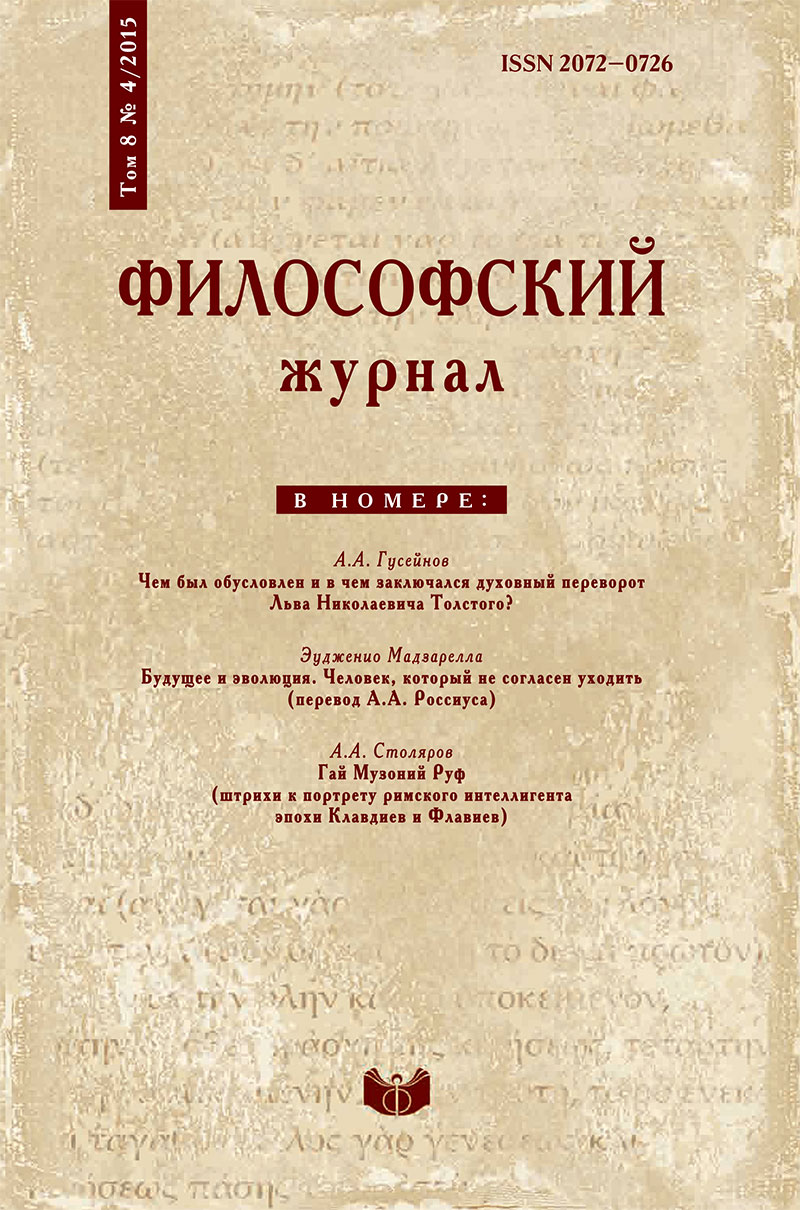What did bring about Leo Tolstoy’s spiritual conversion and what did it consist in?
Keywords:
ethics of non-violence, religion, morals, faith, a practical and moral attitude toward the world, the meaning of life, spiritual crisis, Tolstoy's workAbstract
The present article examines the new understanding of morality as developed by Leo Tolstoy after a long and agonizing journey in search of the meaning of life. Tolstoy is shown to be a spiritual reformer who sought to transform the three dimensions of human spirit: that of art, that of intellect and that of practical morality. As a thinker, Tolstoy proved to be immensely successful in all these endeavours: he demonstrated that it was possible to establish the close unity of all three realms on the ground of a practical and moral attitude toward the world as embodied in the ethics of non-violence. In late 1870s, at the height of universal fame and prosperity, Tolstoy suffered a spiritual crisis which brought about a radical change in his way of life and approach to the values. He regained the meaning of life, which reconciled him with its transience and gave him the strength to live on, in the idea of nonresistance to evil as the most adequate expression of the commandment of love. Not only did he provide the arguments for the ethics of non-violence, but he managed to put it to practice in his own life. There are three points in Tostoy's ethical thinking which are still of a major importance: morality is, for a human being, a personally responsible mode of existence in the world; the world can only become moral through the refusal of violence; the refusal of violence is not a one-time act, but a vast programme covering all vital activity, which must be defined and controlled at every given moment by man himself.






